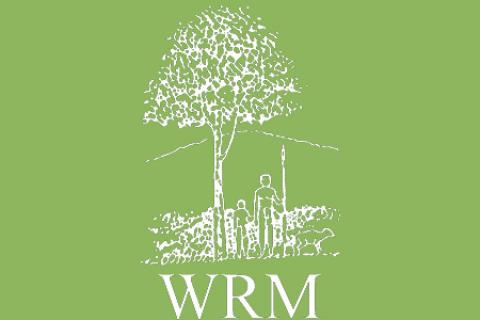The shrimp industry in Malaysia has developed rapidly since the early 1980s after the so-called successes experienced in neighbouring Thailand, Indonesia and Philippines. Malaysia, however, is not one of the major producers of cultured marine prawn in the world, as the area under marine prawn culture is about 5,100 hectares (2,627 hectares in 1995). Despite this, the Government of Malaysia is very proud to claim that the country's average production (metric tonnes per hectare) is the third highest in the world, after Taiwan and Thailand.
Bulletin articles
In the 1980s, shrimp farming became an industry when commercial availability of new technology from Taiwan, along with attractive export prices, led to the Shrimp Fever that swept the country and the rest of Asia. Filipino farmers shifted from milkfish (Chanos chanos) to shrimp, as well as intensified their culture systems from traditional and extensive to higher stocking densities.
Thailand has been the world's No. 1 producer and exporter of farmed shrimp for a number of years, with the shrimp boom starting in the early 1980's. The country's total shrimp output reached 300,000 tonnes last year, higher than the annual average of 200,000 to 250,000 tonnes, thanks to a supply shortage in the world market. Despite this, during 2001, shrimp farmer and exporter associations have asked the government to speedily implement a national policy encouraging shrimp farming to prepare for tougher export competition from neighbouring countries.
Governments in Southeast Asia have promoted shrimp farming as a means to earning foreign exchange. The beneficiaries of this expansion are private companies such as the Thai agribusiness company, Charoen Pokphand. In Thailand, the World Bank, the Asian Development Bank, Charoen Pokphand and the Thai government worked together to set the scene for expanding the shrimp industry. Companies setting up shrimp farming operations in Thailand were offered generous subsidies including tax breaks, tariff-free imports, tax holidays and export credits.
From 1982 onwards, the shrimp industry has been settling in the Cispatá bay, an ecosystem harbouring one of the most exuberant mangroves in the Colombian Caribbean. Presently there are four shrimp industries fully established in this site, covering an extension of approximately 700 hectares. The semi-intensive productive system these farms apply has a daily water recharge in its ponds, reaching an average of up to 15% of its volume, leading to a daily dumping into the estuary of large quantities of water saturated by organic waste.
Over 30 years ago, the destruction of mangroves was started in order to build ponds in beaches and bays. According to data from the former INEFAN and the National Aquaculture Chamber, in January 2000 there were 207,000 hectares or 170,000 hectares respectively of shrimp ponds, of which 50,454 hectares were operating legally. The rest are illegal. In the province of Esmeraldas, where the best conserved and tallest mangroves in the world are to be found, over 90% of the ponds installed there are illegal.
The waters of the Pacific Ocean penetrate the territory of Honduras, Nicaragua and El Salvador through a 35 km entry, forming a water mass of 3,200 kms2 known as the Gulf of Fonseca, with a 261 km coastline.
Different types of wetlands are to be found along the coast, such as mangroves, periodically irrigated by the tides. A forest inventory made in 1987, showed that in the Honduran sector of the Gulf, there were 47,000 hectares of mangroves that year.
Shrimp, considered as the country’s pink gold, became the focus of Mexico’s export-oriented fishing activity because of the importance and economic value of the crustacean in the international --particularly US-- market. Five Mexican states along the Pacific coast (Sonora, Sinaloa, Nayarit, Oaxaca, and Chiapas) and two along the east coast (Tamaulipas and Campeche) have developed shrimp aquaculture.
The Industrial Shrimp Action Network, ISA Net, was formed in 1997, to conduct campaigns with and assist non-governmental organizations from Asia, Africa, North and South America, Europe, and Australia addressing the impacts on local communities, economies, and ecosystems caused by the explosive growth of large-scale shrimp aquaculture. Representatives of environmental and community organizations from 14 nations organized ISA Net as an umbrella group that would support and encourage sustainable, responsible shrimp farming.
The different cases addressed in this bulletin describe a broad range of situations where forests are either being destroyed or conserved. Contrary to the discourse of many experts, these cases show that deforestation is more linked to policies implemented by governments than to actions carried out by local communities. Additionally, they show that cases where forests are being conserved are more the result of organized community efforts than of government action.
The Democratic Republic of Congo (DRC) has nearly half of Africa’s, and 6% of the world’s, tropical rainforest and the area has been recently designated one of the most important forests on the planet by the United Nations.
The Western Lowlands of Eritrea are the easternmost extension of the Sahel, lying between Eritrea’s border with the Sudan and the Eritrean/Ethiopian highlands. Their hills and plains are mainly covered with semi-desert scrub and savannah woodland and interrupted by three river valleys clothed with remarkably dense woodland, some of it mixed acacia and dom palm and elsewhere almost pure stands of dom palm (Hyphaene thebaica).
